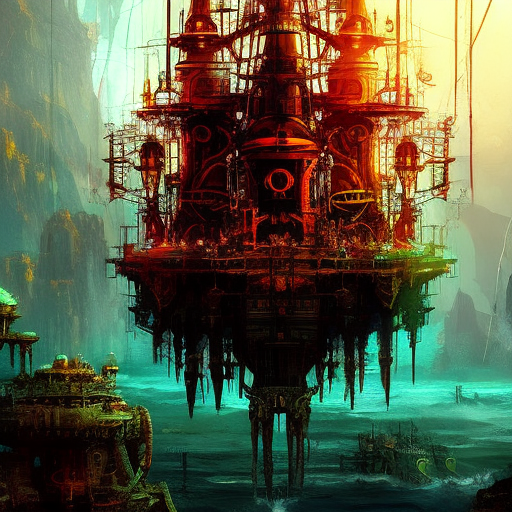Summary:
In Jules Verne’s classic adventure novel, “Twenty Thousand Leagues Under the Sea,” a group of men embark on a perilous journey aboard the futuristic submarine, the Nautilus, led by the enigmatic Captain Nemo. As they explore the depths of the ocean, they encounter magnificent marine life, witness the wonders of the underwater world, and confront the ethical dilemmas of scientific exploration.
The story begins when Professor Pierre Aronnax, a renowned marine biologist, is invited to join an expedition to hunt down a mysterious sea monster that has been terrorizing ships. Along with his loyal servant Conseil and Ned Land, a Canadian harpooner, Aronnax sets out on the USS Abraham Lincoln to solve the mystery.
After a thrilling encounter with the supposed sea monster, the trio finds themselves thrown overboard and rescued by the Nautilus, a state-of-the-art submarine designed and commanded by the enigmatic Captain Nemo. Aronnax and his companions soon discover that Nemo is a complex character, driven by a deep hatred for civilization and a desire for freedom from its constraints.
As they journey through the depths of the ocean, the crew of the Nautilus encounters breathtaking underwater landscapes, including coral reefs, underwater forests, and even the lost city of Atlantis. They also come face-to-face with a variety of marine creatures, such as giant squid, sharks, and schools of fish, providing readers with vivid descriptions of the wonders of the deep sea.
However, as the voyage progresses, Aronnax becomes increasingly conflicted. While he is fascinated by the beauty and diversity of the underwater world, he is also troubled by Nemo’s ruthless pursuit of vengeance against mankind. Aronnax grapples with the ethical implications of scientific exploration and the destructive power of technology, ultimately questioning the boundaries of human knowledge and the impact of our actions on the natural world.
Exploring the Depths: A Journey into the Unknown
Verne’s novel takes readers on a captivating adventure beneath the waves, immersing them in the mysteries of the deep sea. Through vivid descriptions and meticulous attention to detail, the author paints a vivid picture of the underwater world, sparking the imagination and inspiring awe in readers.
The Enigma of Captain Nemo: A Complex Character Study
Captain Nemo serves as the enigmatic center of the story, embodying both the allure and the dangers of the unknown. His deep-seated hatred for humanity and his desire for freedom from society’s constraints raise thought-provoking questions about the nature of civilization and the pursuit of personal ideals.
The Ethics of Exploration: Balancing Curiosity and Responsibility
Throughout the novel, Verne explores the ethical dilemmas of scientific exploration. Aronnax’s internal struggle reflects the tension between the pursuit of knowledge and the potential consequences of our actions. The story prompts readers to consider the impact of human intervention on the natural world and the importance of responsible exploration.
- Curiosity and the thirst for knowledge can drive us to explore the unknown, but we must also consider the potential consequences of our actions.
- The beauty and diversity of the natural world should be appreciated and protected, rather than exploited for personal gain.
- Technology has the power to both enhance and endanger our lives, and it is our responsibility to use it wisely.
“The sea is everything. It covers seven-tenths of the terrestrial globe. Its breath is pure and healthy. It is an immense desert, where man is never lonely, for he feels life stirring on all sides.”
In “Twenty Thousand Leagues Under the Sea,” Jules Verne takes readers on a thrilling underwater adventure while exploring profound themes of exploration, ethics, and the delicate balance between humanity and the natural world. The novel serves as a reminder of the wonders of the ocean and the importance of responsible stewardship of our planet’s resources.












